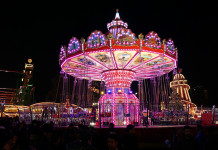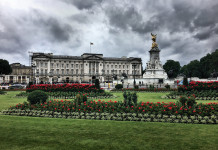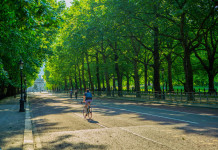Bonfire night is celebrated annually around the UK on the 5th November, and this tradition increasingly attracts visitors from around the globe, eager to get involved in the festivities and swoon over the impressive firework display which light up the city skies. However, how much do you know about the event which prompted Bonfire Night? In this blog, we’ll offer a few quick facts about a British institution…
Bonfire night celebrates a foiled assassination attempt
On 5th November 1605, a group of 13 conspirators tried to kill King James I by blowing up the House of Lords during the state opening of parliament. The plot was stopped, and this is the event which bonfire night traditionally celebrates. If you’re staying at hotels in Bayswater during early November, there are lots of different variations on the event which you can join nearby.
The plot was developed over months
It took many months for the gunpowder plot to develop, during which time the co-conspirators debated what they should do and how to reach their target. A group of English Catholics, their plot was multi-layered, and did not end with the desired explosion. The rest of the details also involved making James I’s daughter the head of state,
Fireworks were an accident
Fireworks are a major feature of bonfire night, but their invention was originally an accident. During the 10th century, a cook mixed three explosive ingredients – sulphur, salt substitute and charcoal – with colourful results. Fireworks were later developed for their decorative effect.
Guy Fawkes is the most famous plotter
There were 13 people involved in the gunpowder plot, but we mostly remember just one, Guy Fawkes. The plot involved other key figures including cousins Catesby and Wintour, as well as Guy Fawkes’ childhood friends Christopher and John Wright. The main reason so much is known about Fawkes in comparison to the other conspirators is because he was the one who they designated as their ‘explosives expert’.
This expertise stemmed from his time in the military, and therefore he was the man chosen to place the gunpowder below Parliament. However, the plot itself was actually led by Robert Catesby.
Fawkes was imprisoned at the Tower of London
During your stay at The Grand Royale Hotel, you can find out more about the life of Guy Fawkes, by heading for the Tower of London. In one particularly gruesome turn, this is the place where Guy Fawkes was tortured and imprisoned. The effects of torture are evident in his signature both before and after the event, which can also be seen on a visit to the Tower of London.
Fireworks were hugely popular in Italy
Though a little different from the fireworks we know today, the feature became extremely popular in Europe during the 14th century. Italy was particularly eager to get involved in the trend, hosting the first recorded fireworks display in Florence.
Bonfire night was mandatory until 1959
Bonfire Night is one of the UK’s most important celebrations, however it’s not mandatory to take part. Until 1959 it was illegal not to celebrate it in the United Kingdom – a fact which is likely to shock quite a few Brits! This was due to an act of Parliament which had remained untouched for centuries, though it’s (thankfully) been a long time since it was actually enforced.
One York-based school refuses to burn a Guy Fawkes effigy to this very day. St Peter’s School was the former school Fawkes attended as a child, so they do not take part out of respect for their alumni.
The term bonfire has sinister origins
You might be wondering why people celebrate a failed assassination plot with a bonfire – but it is thought to reflect the explosive nature of the plot itself. Another suggestion is that the word ‘bonfire’ originates from the ‘bone fire’ which happened as a result of burning witches and heretics during the medieval period.
The damage of the plot would have been catastrophic
Having stowed gunpowder underneath Parliament, if successful, the plot would have destroyed a wide area covering around 500 metres. This is due to the huge quantity of gunpowder which was placed, thought to be around 2,500kg worth of explosives.
Research from the Institute of Physics suggests this explosion could have completely destroyed the City of London as we know it, encompassing many parts of Whitehall, as well as Westminster Abbey – all areas you can explore for yourself while staying at hotels in Bayswater.
A penny for the Guy
There are many associated traditions which were once key to bonfire night, but have since developed or disappeared entirely in the intervening years. One of the most notable is the tradition of asking for a ‘penny for the Guy’, which used to be a way for children to make some extra money from passersby. They would tempt contributions by creating an effigy of Guy Fawkes, the eponymous ‘Guy’ – and this would then be thrown onto the bonfire during the evening.
The plot was revealed in a letter
It was an anonymous letter which ultimately prevented the explosion. This letter was sent to William Parker, 4th Baron Monteagle, on 26th October 1605. In the letter, key parts of the plan were outlined – and a search of the House of Lords discovered Guy Fawkes and 36 gunpowder barrels. Most of his co-conspirators fled London, and Catesby was killed in an ensuing fight. Eight of the conspirators were ultimately executed for their crimes.
Parliament is still checked each November
Even hundreds of years after the event, the Houses of Parliament remain a key target for attacks due to their importance in British society and government. Each November, this real threat also mingles with ongoing superstition, and the area is thoroughly checked to help prevent any copycat attacks. More than 400 years on from the gunpowder plot, it continues to have a strong presence in the hearts and minds of Londoners.









